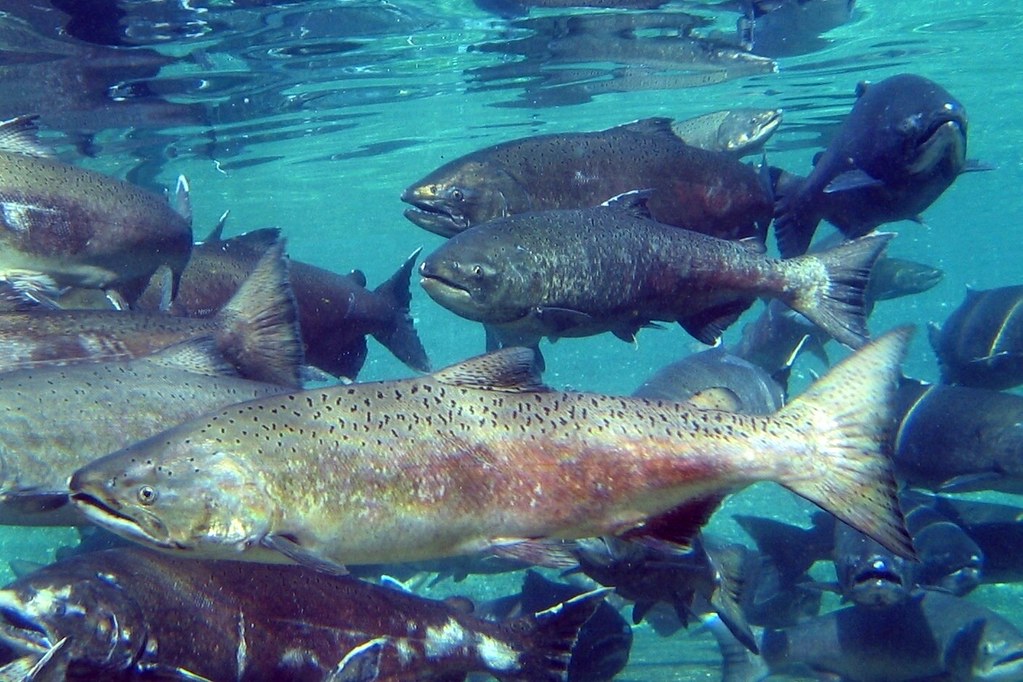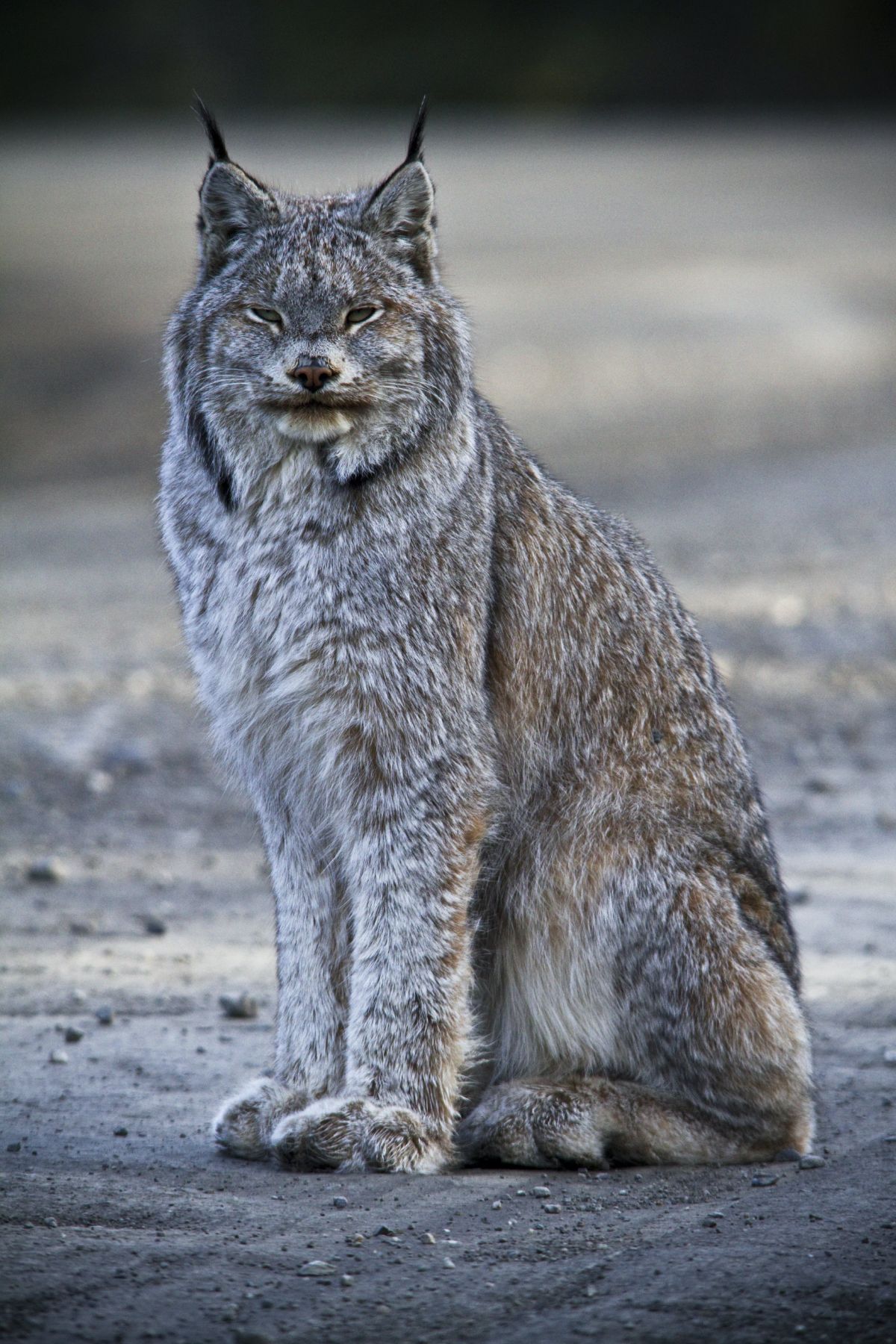Cook Inlet Taiga
The ecoregion’s land area is provided in units of 1,000 hectares. The conservation target is the Global Safety Net (GSN1) area for the given ecoregion. The protection level indicates the percentage of the GSN goal that is currently protected on a scale of 0-10. N/A means data is not available at this time.
Bioregion: Greater Alaska Taiga & Tundra (NA4)
Realm: Subarctic America
Ecoregion Size (1000 ha):
2,794
Ecoregion ID:
371
Conservation Target:
83%
Protection Level:
4
States: United States: AK
The Cook Inlet Taiga ecoregion surrounds the upper portion of Cook Inlet and includes the city of Anchorage, with 291,538 residents (in 2018) the most populous city in Alaska. This ecoregion is mostly enveloped by the Alaska-St. Elias Range Tundra ecoregion, but also borders the Pacific Coastal Mountains Icefields and Tundra ecoregion on the southeast and the southern edge borders the Northern Pacific Alaska Coastal Forests ecoregion. Its coastal location, relatively mild climate, and scenic landscapes have attracted more people to the Cook Inlet area than anywhere else within Alaska.
Nevertheless, the Cook Inlet Taiga ecoregion is mostly intact, with 30% of its area formally protected and some 54% of habitat outside protected areas remaining in essentially natural condition. Major protected areas include the Kenai National Wildlife Refuge (7,770 km2) and Denali State Park (1,316 km2).
Thanks to its proximity to the ocean and the relatively mild Alaska Current, as well as the Alaska Range to the north blocking extreme cold from interior Alaska, the Cook Inlet Taiga ecoregion has a moderate climate for its latitude. The average minimum temperature in winter is -15oC, and in summer the average maximum temperature is 18oC. The northern portion of this ecoregion, however, while still relatively mild, can have cold spells down to -40oC. Average precipitation across the ecoregion ranges from 380 mm to 680 mm.

The flagship species of the Cook Inlet Taiga ecoregion is the chinook salmon. Image credit: Creative Commons
Vegetation within the ecoregion is unusually diverse because this is a transition area from Sitka spruce-dominated coastal rainforests to boreal forest/taiga and, at high elevations, alpine tundra. The transitional boreal forest is marine-influenced, with forests dominated by white spruce, black spruce, and Lutz spruce (a hybrid between white and Sitka spruce) along with quaking aspen, Alaska birch, Kenai birch, black cottonwood, and balsam poplar. Peatlands dominated by sphaghum moss are interspersed with spruce in some lowlands. Subalpine areas are dominated by mountain hemlock and various shrubs.
Important disturbances that affect vegetation are fire, spruce bark beetle outbreaks, and snowshoe hare irruptions. Besides snowshoe hare, forest mammals include moose, black and brown bears, lynx, wolf, coyote, porcupine, weasels, and red squirrel. The Kenai Lowland Herd of caribou winters in mature spruce stands and feeds on arboreal lichens.
Characteristic forest birds include the migratory orange-crowned and myrtle warblers, olive-sided flycatcher, fox sparrow, ruby crowned kinglet, and Swainson's and hermit thrushes, with resident birds including great horned owl, hairy and downy woodpeckers, spruce grouse, raven, gray jay, red-breasted nuthatch, and boreal and black-capped chickadees. The migratory golden-crowned sparrow inhabits boreal bogs and willows near treeline.

Canada lynx. Image credit: NPS Jacob W. Frank, Creative Commons
The alpine tundra community is dominated by crowberry, willows, green alder, and lichens. Mammals in this community include dall sheep, mountain goat, pika, and hoary marmot. Brown bears feed on berries and occasionally marmots, especially in fall, while wolves and golden eagles hunt young sheep and wolverines scavenge carcasses. Characteristic birds of the alpine tundra are rock and willow ptarmigan.
A northern finger of this ecoregion contains Denali State Park, which borders Denali National Park to its west and offers fine views of Denali, at 6,190 m elevation the highest peak in North America. The arctic tern breeds in this area of the ecoregion and migrates to Antarctica and back—19,320 km each way—every year, while the lesser golden plover nests on the tundra and winters in Polynesia.
The Kenai River watershed in the southeastern portion of the ecoregion supports all five species of Pacific salmon, including the largest-bodied stock of king (chinook) salmon in the world. This watershed also supports the second-highest wintering population of bald eagles in Alaska, and virtually the entire population of Wrangell Island snow geese uses the mouth of the Kenai River and Trading Bay (on the west side of Cook Inlet) as a spring migratory staging area.
Urban development, logging, oil and gas development, increased tourism, and intensive recreation are chief threats to this ecoregion. Priority conservation actions for the next decade are to: 1) increase the area of land designated for protection—at least 50% protection is appropriate for this ecoregion; 2) reduce the level of timber harvest and other resource extraction; and 3) carefully manage tourism and recreation throughout the ecoregion to sustain its wild character.
Citations
1. Ricketts, T.H. et al. 1999. Terrestrial Ecoregions of North America: A Conservation Assessment. Island Press, Washington, D.C.
2. Kenai National Wildlife Refuge: Wildlife and their habitats. U.S. Fish and Wildlife Service. https://www.fws.gov/refuge/Kenai/wildlife_and_habitat/index.html
3. Denali State Park. Alaska Department of Natural Resources. http://dnr.alaska.gov/parks/units/denali1.htm





